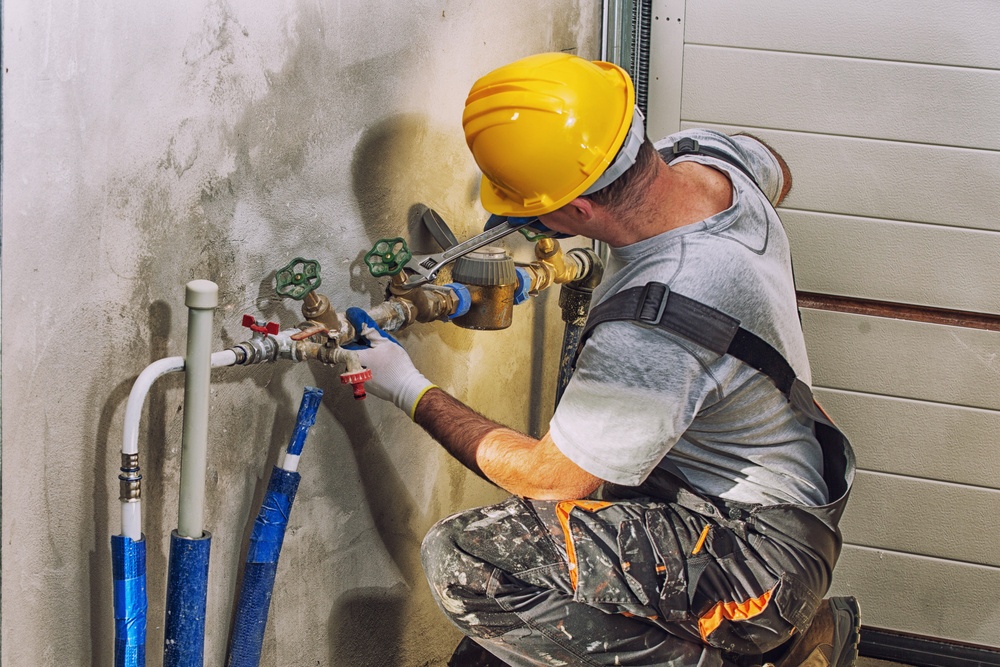It’s a big deal to finally move into your own place. There’s the thrill of making a place feel like home and the pleasure of having your own space. First-time homeowners, however, may find the responsibility of property ownership to be a source of further stress. Everything, from housekeeping to fixing leaky faucets, falls on your shoulders when you own your own home. You’ve probably worked with plumbers before, but now that you’re a homeowner, you’ll be accountable for the pipes and their maintenance.
It’s natural to feel scared and overwhelmed by all of this, but remember that you’re not alone, and others have been in your shoes and have successfully solved such challenges. Hopefully, this article can prepare you with appropriate information to give you peace of mind about any future plumbing issue.
- Conduct A Plumbing Inspection
Plumbing leaks occur when pipes deteriorate or when connections loosen over time. They might result in something as subtle as a dripping sound or as dramatic as a gushing torrent that floods your home. Moreover, leaks in the exposed pipes beneath your sinks are simple to detect, unlike those that occur behind walls.
One piece of advice is to check your water meter regularly. Take note of the result, wait an hour without consuming any water, and, then, recheck to see if it’s changed. A leak in your plumbing system can be evidenced by a rise in the said figure even when you haven't used any water.
Additionally, you can drop some liquid food coloring into your toilet tank and wait a few minutes to see whether any of it makes it into the bowl, indicating a possible leak. You need to repair it yourself or have a professional do the job as soon as possible to prevent any other issues.
By doing regular inspections, you can catch issues at an early stage, as well as save money on more expensive repairs. When possible, do one before you move in. If there are any hidden plumbing issues, you'll want to find out about them as soon as possible.
In order to evaluate the sewer systems and locate the water pipelines, it’s best to call in experienced professionals, like Water Workx Plumbing, that have access to sophisticated tools and cameras. The pipes are inspected, and fixes are suggested if any issues are found.
- Locate The Main Water Valve
First-time homeowners should know where the main water shut-off valve is, and how to turn it on and off. This is typically situated in the basement, under the kitchen sink, or outside the house in a ground-level utility box. If you need help finding the said valve, look at the inspector's report or call the team that built your house. They can help you find it quickly.
Consequently, turning the main valve clockwise will stop the water flow. It’ll cut off the water supply to your home, rendering all appliances and fixtures inoperable. However, it’ll also stop the water from rushing into your home. Additionally, it’ll help you troubleshoot and find which pipe is faulty. If it’s a basic plumbing issue, like loose fittings, you may work on it as soon as possible. But, if you can’t find the faulty pipe or it looks too complex for you, then it’s best to coordinate with professional plumbers.
- Maintain And Clean Your Drains
There are several potential culprits for clogged pipes. You should avoid dumping food scraps, oil, and hair. They’ll cause issues with your plumbing if you don't remove them immediately after moving in. Unclogging work must begin with a plunger to force the debris downward. In a pinch, you can even use a homemade remedy, such as a mixture of dish soap and vinegar. In addition, maintaining a regular drain cleaning schedule will keep gunk from building up and, eventually, clogging your pipes.
Clogged drains are a nuisance, and avoiding them is always preferable to fixing them after the fact.

- Apply Weather-Proofing On Your Pipes
Pipes can be vulnerable to damage from environmental factors. Because pipes might freeze throughout the winter, this time of the year poses the most significant risk. Frozen pipes might break at any time, releasing a torrent of water and, perhaps, damaging your home. To prevent such situations, it’s essential to drain the water and shut off the main water supply. Put heating tape and insulation foam around the exposed pipes to keep the cold out. Also, put the faucets on a gentle drip and leave the cabinet doors open to let in some warm air.
- Prepare An Emergency Repair Kit
Keep your plumbing emergency kit where it may be quickly accessed. It’d help if you had a couple of rags, small towels, duct tape, heavy-duty paper rolls, a plunger, hex keys, and a screwdriver. You should be able to fix some of the most common plumbing difficulties with the said tools.
Publisher Website: https://www.waterworkxplumbing.com.au/